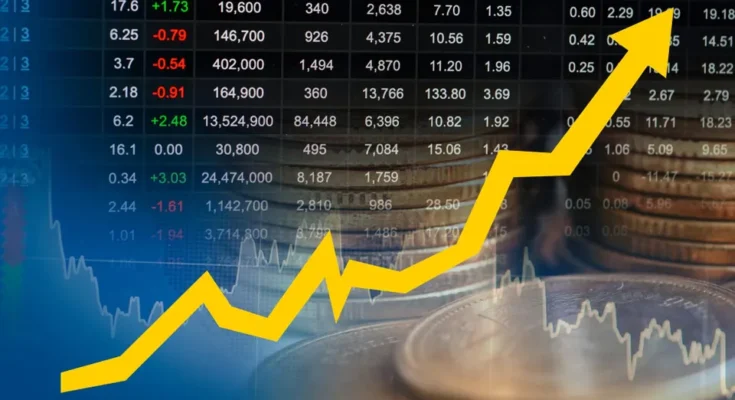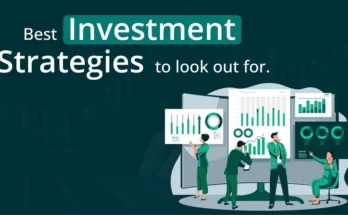Time is money in the world of investment, thus the investor needs to have access to real time data and the rise and fall of stock performance. Most of the investors use Google Finance, which is one of the most effective and user-friendly tools for monitoring the investments. Although it is best known for tracking stock prices, which almost everyone does, one of its most powerful assets is the charting tools available that help the investors to study the patterns and make better judgment. In this article, we will share a nice Google Finance tutorial explaining its easy to use charts and demonstrate why Google Finance is the best tool for stock performance.
What Makes Google Finance the Ultimate Tool for Stock Performance Charting?
Google Finance has become the favorite destination for even the novice investors, thanks to its simple structure and a variety of data sources. However, what makes Google Finance far ahead of all other alternatives is its ability to track performance of stocks over time along with robust charting tools.
This is the most significant reason why Google Finance should be the only option when it comes to stock performance charting:
- Real-time Data: For all those who fear to include real stock prices in the charts and end up being out of sync with the market, Google Finance proves effective in ensuring incorporation of real stock prices in the charts.
- Interactive Charts: The interactive charts are quite simple and easy to use, thus making Google Finance enable the tracking of pricing trends.
- Simplicity: One can be very tight-fisted or very naive when it comes to stock performance; still, Google Finance has a charting for everyone.
It covers everything even into its technical details, which means that it is perfect not only for the investors but also for the analysts like us.
An Introduction to the Charting Features on Google Finance
There are many ways to go about using charts on Google finance and it is quite easy to get started. In other words, here’s the basic charting function and how to use it:
- Access the Chart: To see the interactive chart of a stock, type or use the search on Google Finance homepage as shown above. Once the stock page opens, the user will first see an interactive chart that displays the history of that stock within the default time range set, for example, (1-day, 5-days or even 1-month).
- Timeframes: Of the many benefits that you get with the Google Finance chart, the most useful must be the changing of the time frames of the chart. There are several periods you can choose from, such as:
- 1 Day
- 1 Week
- 1 Month
- 3 Months
- 6 Months
- 1 Year
- 5 Years
- Max
You can also look into making use of these time frames to evaluate performance over both short and long periods. Thus, for example, should you want to know how a certain stock has performed over the past thirty days, the 1-month chart will present daily price fluctuations. On the contrary, the 5-year is normal and shows the patterns, growth, or even volatility experienced in a stock over a very long time.
Enlarge and Reduce Like this is an interactive chart, where you can also see the details of shorter intervals as well as extend the view to see a wider section of the picture. This is useful in identifying such things as patterns that may be inside the chart, like including resistance and support levels, or if there are any other cycles in the markets that are very long.
Comparative analysis of stock and index performance
A relative measure of vertical performance helps analyze a stock in view of other stocks or a stock market index. Google Finance offers this opportunity in its full scope by enabling the user to present preferred stocks and indices in one chart.
Case in point:
- Monitoring of Sector Performance: In case you are buying shares in the technology sector, you can check your stock against the movements of NASDAQ index whose composition is almost entirely technology stocks. This helps you to understand whether your stock has beaten or lagged behind the market.
- Stocks can be invested in more than one at a time: The users of Google Finance have an option of overlaying on the same picture, up to 6 stocks at a time over the same given time which depicts how time segments of different stocks have performed. This tool comes in handy when one is tracking a portfolio or other competing stocks in the same sector of the economy.
Mobile-Friendly and On-the-Go Access
In this modern world, keeping up with stocks by monitoring the performance wherever one is needs real-time information. Google Finance, on desktop and mobile devices, helps to track charts anywhere. Whether you are traveling or commuting or are away from your workstation, the mobile version of Google Finance will help you in catching the final market move.
To summarize
Google Finance has become one of the best tools in measuring stock performance owing to its effective charting capabilities. Timeliness is one of those features where one gets real time data, other features include the ability to customize the charts, perform comparative analysis and the news where all the tools one requires to evaluate a stock are taken from different angles. If you are an investor in advanced analysis or a novice investor who is just beginning to seek investment advice, Google Finance’s charting tools are uncomplicated and facilitate more accurate investment decisions.
Hence by learning how to make good use of Google Finance charts, anyone can follow stock changes, find new opportunities, and invest with logic rather than emotions. No matter if you are focused on studying cycles of several weeks or months or the growth potential for years, Google Finance allows you to design the way you are going to win on the stock exchange.



